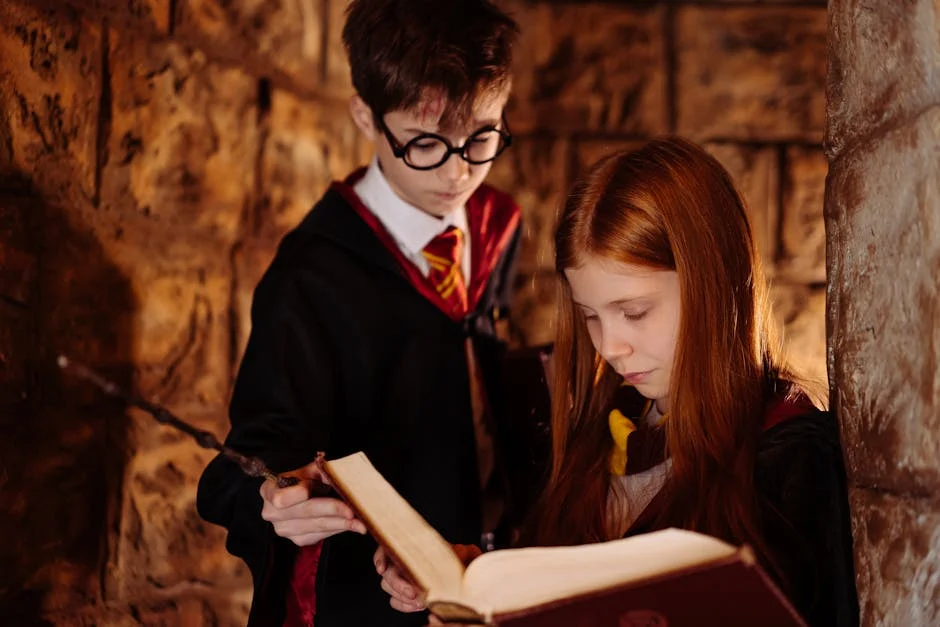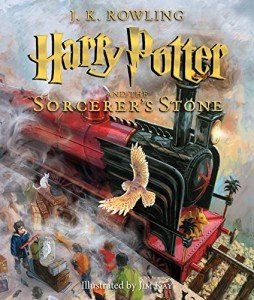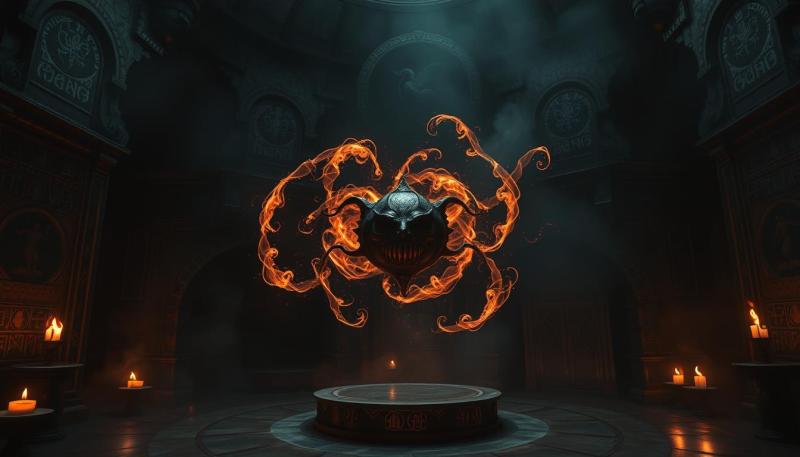Introduction to Unforgivable Curses
Definition and Significance
In the magical world of Harry Potter, the Unforgivable Curses stand as a benchmark of the dark forces wizards can wield. Consisting of three spells—Avada Kedavra, Cruciatus, and Imperius—these curses are deemed unforgivable due to their severe implications and consequences for both the caster and the victim. The use of these spells is strictly forbidden, with those who cast them facing a one-way ticket to Azkaban, the infamous wizarding prison. The significance of these curses extends beyond mere magic; they encapsulate the moral and ethical dilemmas faced by the characters who navigate a world filled with darkness and choice. Understanding the impact of these spells deepens your comprehension of character development and plot dynamics throughout the series.
Overview of the Harry Potter Series
The Harry Potter series, created by J.K. Rowling, explores the life of a young boy who discovers his identity as a wizard. From her detailed portrayal of Hogwarts School of Witchcraft and Wizardry to her intricate world-building, Rowling not only introduces readers to magic but also delves into themes of friendship, love, and sacrifice. Through Harry's journey, you witness the rise of dark forces led by Lord Voldemort and his Death Eaters, who frequently rely on the Unforgivable Curses to instill fear and exert control. Various characters, including students, grapple with the allure and danger of engaging in dark magic. The complexity of their choices provides a narrative richness that resonates with readers. For instance, Harry’s repeated failures at casting the Cruciatus Curse highlight his innate morality, contrasting sharply with characters like Draco Malfoy and Bellatrix Lestrange, who embrace dark spells with gusto. Throughout the series, the curses serve not only as tools for aggression and domination but also as symbols of the internal struggles faced by characters, allowing for profound character arcs and moral lessons. As you delve deeper into the series, observing instances where these curses are attempted or used reveals the nuanced ways in which magical power interacts with human emotion and morality. You will find that the exploration of these curses enriches your reading experience, prompting deeper reflection on the themes of good versus evil, choice, and consequence.
Harry's Attempts with the Cruciatus Curse
Attempt Against Severus Snape
In "Harry Potter and the Half-Blood Prince," Harry Potter’s fiery emotions drive him to confront Severus Snape, whom he perceives as an enemy. During a critical moment in the narrative, driven by rage over Snape's perceived betrayal, Harry attempts to cast the Cruciatus Curse on Snape. This spell, designed to inflict unbearable pain, symbolizes Harry's deep anguish and desire for vengeance after the loss of his godfather, Sirius Black. Despite his determination, Harry struggles to channel the necessary power, showcasing his internal conflict. The curse is easily deflected by Snape, highlighting Harry's lack of mastery over such dark magic. This failed attempt reveals not only Harry's emotional turmoil but also serves as a significant moment that emphasizes his moral compass; he is unable to completely surrender to darkness despite the intense provocation. The scene is a poignant reminder that true strength lies not only in magical ability but also in the restraint one exercises in the face of overwhelming emotions.
Failure During the Battle
In a pivotal encounter in "Harry Potter and the Order of the Phoenix," Harry experiences another failure to properly execute the Cruciatus Curse. After witnessing the death of Sirius at the hands of Bellatrix Lestrange, Harry's grief transitions into a fervent desire for revenge, compelling him to hurl the curse at her. Unfortunately, his attempt falls short. Harry’s emotional state clouds his ability to perform the curse effectively; rather than instilling fear and pain, his actions reveal more about his character than the darkness he wishes to unleash. Instead of becoming a harbinger of torment, he finds himself grappling with guilt and uncertainty, underscoring the notion that the ability to commit acts of evil is overshadowed by an innate resistance to harm. This intimate moment illuminates Harry's moral struggle, positioning him as a hero who, despite the allure of dark magic, chooses to uphold his values rather than succumb to vengeance. Each of these failed attempts serves as a reflection of Harry's character evolution, which consistently prioritizes empathy and compassion over the seductive nature of power, particularly within tumultuous contexts.
Set of 30 Remastered Printable Daily Newspaper Pages, Wizard and Witch Poster, Wizard Home Decor, Travel Poster, Wizard Wall Art, Halloween
Transform your space with these enchanting, vintage-style newspaper pages that bring the magic of the wizarding world to life
Product information
$24.36
Product Review Score
4.53 out of 5 stars
78 reviewsProduct links
Ron Weasley's Misfire with the Killing Curse
Encounter with Nagini
In the climactic scenes of "Harry Potter and the Deathly Hallows Part II," Ron Weasley finds himself facing one of the most terrifying creatures in the series: Nagini, Voldemort's deadly serpent. Amid the chaos of the battle, Ron points his wand at the snake, seemingly preparing to cast the infamous Killing Curse, Avada Kedavra. Although the film adaptation does not explicitly state the spell, the visual cue of the green light that emanates from his wand suggests an intention to unleash a fatal curse. This moment epitomizes the heightened stakes of the final confrontation and Ron's desperation to combat the forces of darkness. The tension in this scene illustrates not only Ron's bravery but also the weight of potentially wielding an Unforgivable Curse. It is evident that he understands the curse's significance, as it marks a departure from the more controlled and moral boundaries usually adhered to by the characters at Hogwarts. While the curse itself does not strike Nagini, the visual representation leaves audiences pondering the implications of what Ron was willing to attempt. This encounter exemplifies the conflicts that characters face when they grapple with choices that could lead them closer to darkness. Even if Ron does not successfully cast the curse, the attempt shows the character's evolution from a somewhat comedic sidekick to a brave participant in the fight against evil.
Context in the Final Battle
The context surrounding this moment is vital in understanding the emotional and narrative arcs of the characters involved. In the backdrop of the Battle of Hogwarts, the stakes are extraordinarily high, with the lives of their friends and allies hanging in the balance. Ron, alongside Hermione and Harry, is thrust into a position where moral clarity is often overshadowed by sheer desperation. In this frantic environment, the decision to employ an Unforgivable Curse reflects the themes of friendship, fear, and the struggle against overwhelming odds that permeate the series. Ron’s attempt to cast a Killing Curse ultimately serves as a narrative device, revealing his internal conflict and the pressure exerted on young wizards to step up against evil. This moment captures the essence of what it means to be thrust into circumstances that call for extraordinary measures, forcing characters to confront their morals. Ron Weasley's misfire with the Killing Curse symbolizes not just a failed spell but also an awareness of the darkness that lies within the magical world they inhabit. As the battle rages on, moments like this deepen the tension, illustrating how relationships and choices can be tested in the most dire of situations.
Harry's Vengeful Use of the Cruciatus Curse
Confrontation with Bellatrix Lestrange
As you delve into "Harry Potter and the Order of the Phoenix," you witness a pivotal moment during the Battle of the Department of Mysteries. Harry, consumed by grief and rage after witnessing Sirius Black’s death at the hands of Bellatrix Lestrange, finds himself driven by vengeance. Chasing after Bellatrix through the Ministry of Magic, he decides to unleash the Cruciatus Curse, a dark spell meant to inflict unbearable pain on its victim. Although the curse is viewed as one of the most feared Unforgivable Curses, Harry's attempt reveals the depth of his turmoil. As he channels his anguish into casting the curse, he soon realizes that his magical training is simply inadequate for such a powerful spell. While he sends the incantation spiraling toward Bellatrix, she isn’t affected by the curse’s intended torture. This moment is critical, displaying Harry's emotional state and the challenges of wielding dark magic. Rather than achieving vengeance, his failure underscores the fine line between justice and becoming the very thing he despises.
Emotional Drive Behind the Use
Understanding the emotional backdrop of Harry's actions is crucial. The loss of Sirius, his godfather and a father figure, has devastated Harry. The pain he experiences is magnified in that moment, prompting him to retaliate against Bellatrix with the most agonizing curse available. However, this decision propels him into a moral quandary that resonates throughout the series. Harry's struggle to cast the Cruciatus Curse reveals not only physical limitations but also profound internal conflict. His desire for revenge contrasts sharply with the values he has absorbed throughout his journey at Hogwarts. Instead of succumbing to the darkness, Harry's failed attempt to inflict pain showcases his inherent goodness, suggesting that true strength lies in restraint, even amidst grief. You see how the burdens of loss and the thirst for retribution cast a shadow on his character development. In these moments, the narrative becomes a complex tapestry of emotion, intertwining Harry's quest for justice with the overarching themes of love and loss. His confrontation with Bellatrix serves as a testament to how young witches and wizards grapple with ethical dilemmas when faced with overwhelming despair and rage. This battle not only tests his magical abilities but also his morals and beliefs.
Seventh-Year Students and Dark Arts
Neville Longbottom’s Observations
As you delve into the tumultuous environment of Hogwarts during the events of "Harry Potter and the Deathly Hallows," Neville Longbottom emerges as a keen observer of the changes unfolding around him. The inclusion of dark practices within their education, specifically the use of Unforgivable Curses, profoundly shapes the experiences of students. Neville’s reflections highlight the moral and ethical dilemmas faced by students who are suddenly thrust into a world where they must grapple with choices that test their integrity. The prevalence of dark arts in their curriculum not only shifts their understanding of magic but also raises questions about complicity and resistance in the face of evil. Neville represents the voice of caution, emphasizing the importance of standing against the darker aspects of their education, even when faced with peer pressure to comply.
Practices Under Amycus Carrow
Under the influence of Amycus Carrow, the newly appointed Defense Against the Dark Arts professor, the atmosphere of Hogwarts starkly transforms. Carrow’s approach to teaching actively encourages the use of dark magic, marking a significant departure from the previous educational standards upheld at the school. You witness students, particularly those like Neville, confronted with the unsettling reality of their lessons, which now involve practicing the Cruciatus Curse on fellow students. This unsettling dynamic reflects a shift in power and the normalization of cruelty within the academy. Neville’s refusal to partake illustrates a rebellion against the moral decay that has seeped into their educational environment, emphasizing his growth as a character who values ethical lines. This practice becomes a battleground not only for magic but for the very soul of Hogwarts, as students are tested not just on their ability to cast curses but on their willingness to resist the allure of dark magic. In this fraught atmosphere, the tension between compliance and resistance becomes palpable, setting the stage for dramatic confrontations. As Carrow's lessons unfold, students find themselves at a crossroads, forced to navigate the chilling implications of casting such powerful and malevolent spells. The pressure exerted on young wizards reveals the extent to which fear and ideology can corrupt the minds of those once innocent, pushing them toward a reality that strays dangerously close to the darkness they are meant to combat.
Harry Potter Platform 9 3/4 Heat Changing Mug
Watch the magic unfold as this mug changes with your hot drinks, perfect for any Hogwarts fan!
Product information
$24.99 $14.99
Product Review Score
4.96 out of 5 stars
158 reviewsProduct links
Draco Malfoy's Strategic Use of the Imperius Curse
Manipulating Katie Bell
As a student at Hogwarts, Draco Malfoy exemplifies the darker side of ambition and cunning. His strategic implementation of the Imperius Curse to control Katie Bell is a reflection of his deepening alignment with Voldemort's ideals. In his intent to deliver a cursed necklace, Draco’s actions underscore his willingness to manipulate and endanger a fellow student for the sake of furthering his own goals. This incident serves not merely as a plot device, but illustrates the moral implications of exerting power over others. You see how the use of such a formidable curse alters the agency of Katie, reducing her to a pawn in Draco’s dangerous game. This moment also highlights the disturbing reality of Hogwarts under the weight of dark influence, where students are caught in a web of manipulation and deceit. Your connection to Katie's plight emphasizes the chilling effects of dark magic on interpersonal relationships within the school, revealing how deeply fear and control can infiltrate their lives.
Tactics in the Half-Blood Prince
Draco’s calculated approach in "Harry Potter and the Half-Blood Prince" reveals his internal conflict and desperation as he seeks to fulfill the sinister task assigned to him by Voldemort. You recognize the pressure he faces as he attempts to secure a means to kill Albus Dumbledore, a goal that significantly impacts his character development. By employing the Imperius Curse, Draco demonstrates a shocking level of moral compromise, as he forcibly acquires compliance from Katie Bell to carry out his plan. His hesitations and the weight of his actions become apparent in moments where his hesitation betrays a flicker of conscience. You comprehend that Draco is trapped within a cycle of fear, loyalty, and ambition, which compels him to engage in actions that conflict with his better nature. The harrowing choice to wield such a powerful curse against a peer not only reveals his willingness to embrace dark magic but also exposes the vulnerabilities of Hogwarts during this tumultuous period. This complex interplay of fear, loyalty, and manipulation showcases the dire circumstances that lead students to reconcile their ethics with the influx of dark influences in their lives, forcing you to ponder the implications of such decisions in the face of overwhelming pressure.
Vincent Crabbe's Attempt at the Killing Curse
Confrontation in the Room of Requirement
In the chaotic climax of "Harry Potter and the Deathly Hallows," you find Vincent Crabbe in the Room of Requirement, facing off against Harry Potter and his friends. The atmosphere is charged with tension, a reflection of the battle raging outside. Here, you observe the unexpected moment when Crabbe, in a moment of desperation and misplaced bravado, decides to wield an Unforgivable Curse—the Killing Curse—against Ron Weasley. As he brandishes his wand, you witness the culmination of Crabbe’s loyalty to Draco Malfoy and the dark influences that engulf him. The stakes are high, knowing the power that the Killing Curse holds and the lives that hang in the balance. You can almost feel the fear sweep through the space as Ron narrowly escapes, uncertainty lingering in the air about the true impact of Crabbe's actions. This pivotal confrontation exposes the fragility of childhood innocence, as a young wizard grapples with forces far beyond his understanding, influenced by the very darkness they are supposedly fighting against.
Implications of His Actions
Crabbe's attempt at casting the Killing Curse reveals significant implications, not just for the characters involved but for the larger context of morality within the wizarding world. His actions highlight a disturbing reality—the acceptance of dark magic among students once deemed harmless. As you dissect the motivations behind Crabbe's behavior, it becomes clear that fear, peer pressure, and the desire for acceptance play crucial roles in his choice to align himself with darkness. Crabbe’s journey encapsulates the potential for corruption that lies within, showcasing how easily a young wizard can be swayed to abandon their morals in the face of such overwhelming influences. The chaos in the Room of Requirement acts as a microcosm for the broader struggles within Hogwarts, where students are forced to confront the allure of dark magic head-on. In this moment, Crabbe’s inability to wield the Killing Curse effectively signifies more than a simple fail; it is a reflection of a young man caught in the throes of a conflict that far exceeds his comprehension, perpetuating a cycle of violence and moral ambiguity that threatens to engulf all of them. His futile attempt encapsulates the tragic transformation from innocent childhood to a harsh reality dictated by the choices one makes in the face of adversity.

Source: images.pexels.com
Successful Casting of Imperius Curse by Harry and Ron
Gringotts Break-in Overview
In "Harry Potter and the Deathly Hallows," the Gringotts break-in sequence serves as a pivotal moment in the narrative, where you observe Harry and Ron stepping beyond their previously understood limitations. Under the cloak of invisibility, they join Hermione and Griphook in a dangerous mission to infiltrate the Lestrange vault. During this intense scene, Harry successfully casts the Imperius Curse on Bogrod, the goblin guarding the entrance. This marks a significant departure for him, as he transitions from merely being a student learning about dark magic to someone actively engaging with it to achieve a noble goal. You sense the tension as Harry navigates the delicate balance of moral judgment throughout this experience. The Imperius Curse, a powerful and dark spell, represents a forced submission of free will, a theme that resonates deeply within the wizarding world. Yet, in this moment, you witness Harry’s skill in manipulating its power, which allows them to continue their mission without raising alarms. Harry's success not only highlights his growth as a wizard but also showcases the escalating stakes of their quest. His ability to cast an Unforgivable Curse effectively portrays the complexity of their situation, where the ends seem to justify the means in their battle against Voldemort.
Impact on the Storyline and Characters
The use of the Imperius Curse by both Harry and Ron during the break-in shifts the dynamics of their character arcs significantly. For Ron, this act represents a major step in his character development. Historically viewed as a more hesitant and less confident character compared to Harry, Ron's successful casting of the curse demonstrates his growth and willingness to explore darker realms of magic for a worthy cause. This newfound agency imbues him with a sense of purpose, reinforcing his loyalty to his friends while simultaneously highlighting the moral boundlessness they are compelled to confront. As you analyze the implications of their actions, the Imperius Curse encapsulates the ethical dilemmas faced by the characters. The necessity to resort to dark magic for survival raises questions about integrity, loyalty, and the consequences of their choices. The moment forces you to reckon with whether the ends truly justify the means, complicating the black-and-white morality traditionally depicted within the series. This foray into dark magic transforms the characters’ motivations into profound reflections on their legacy and responsibility, leading them to navigate a precarious path that blurs the line between good and evil in their quest for justice.









